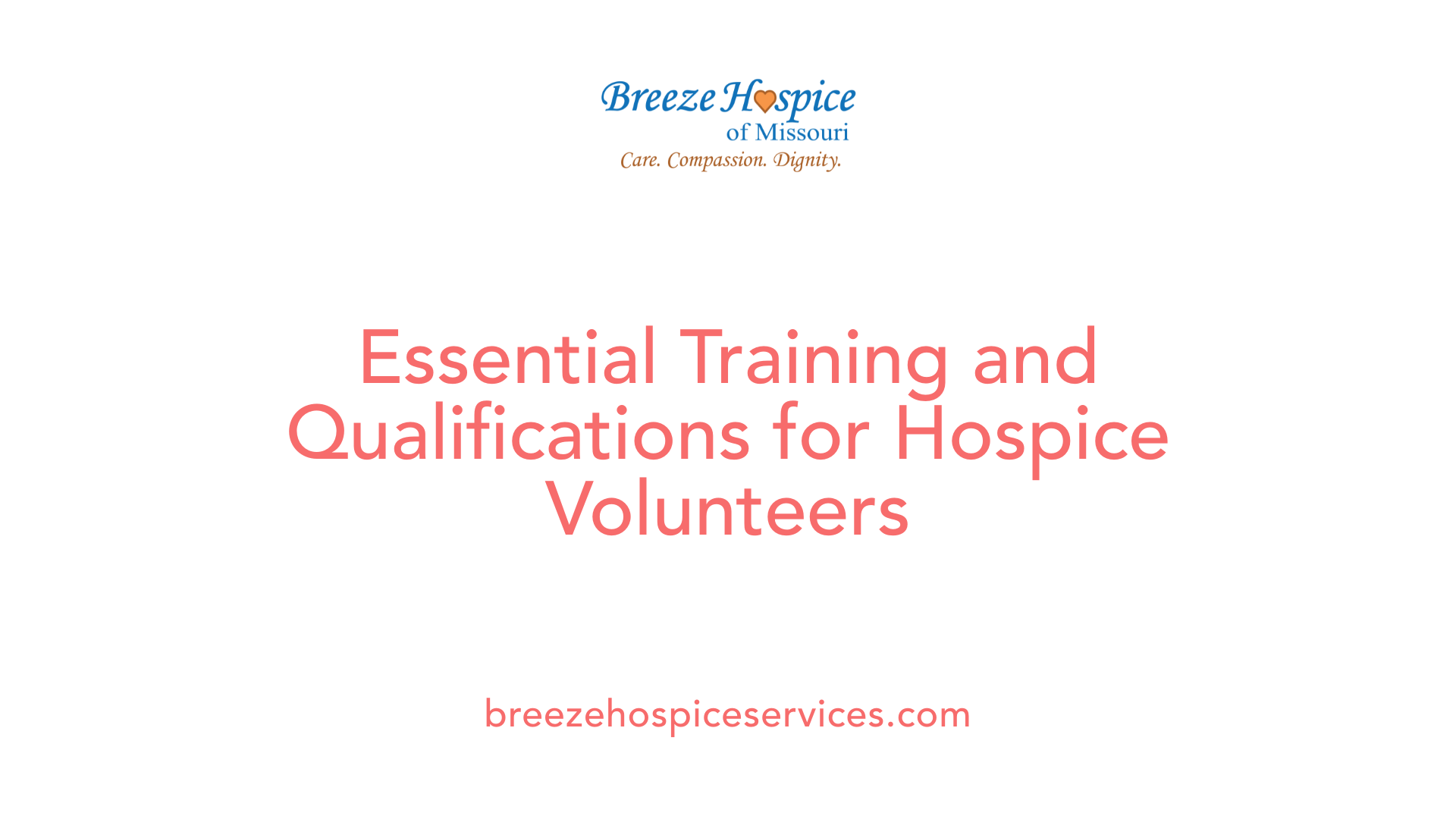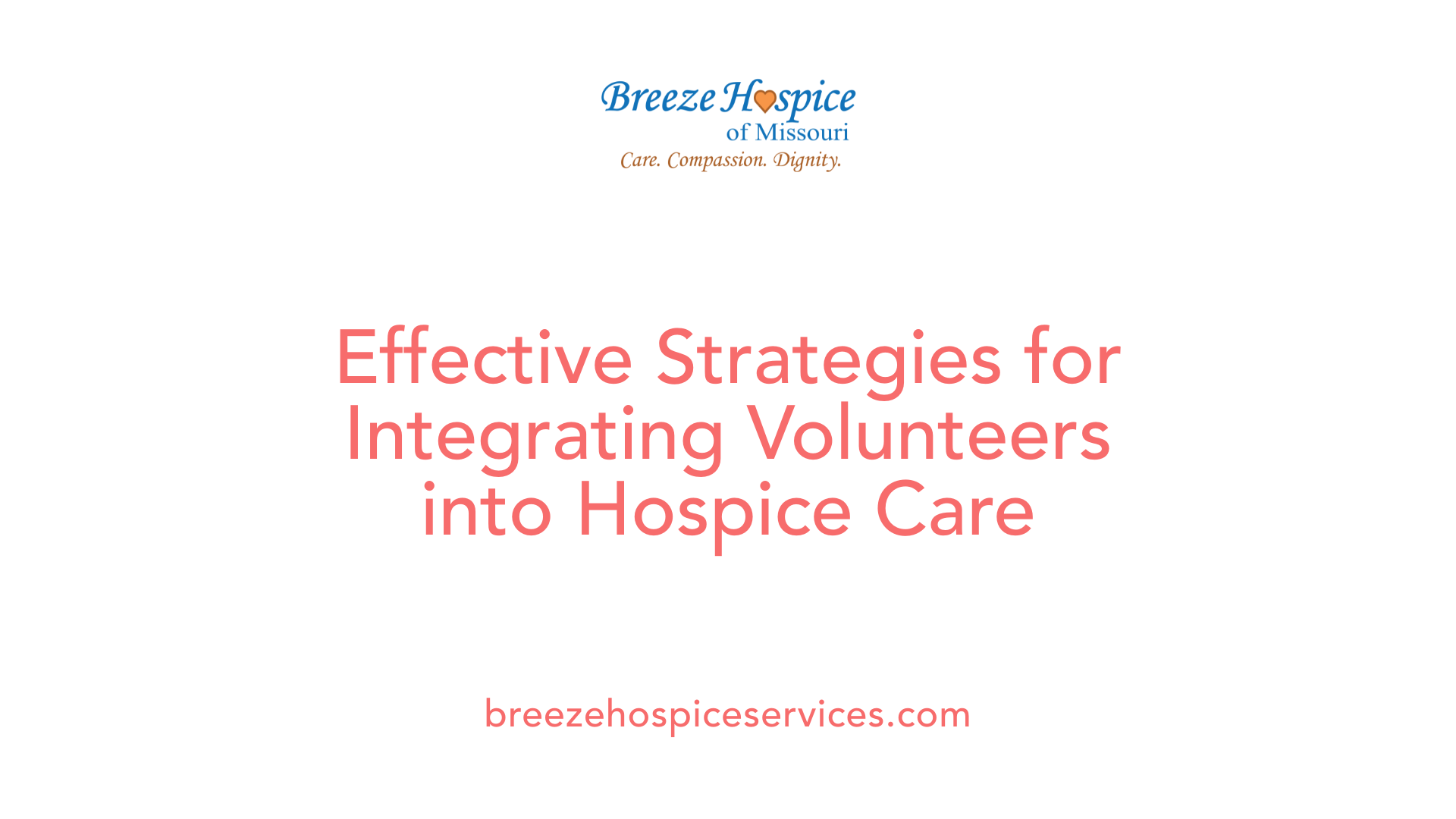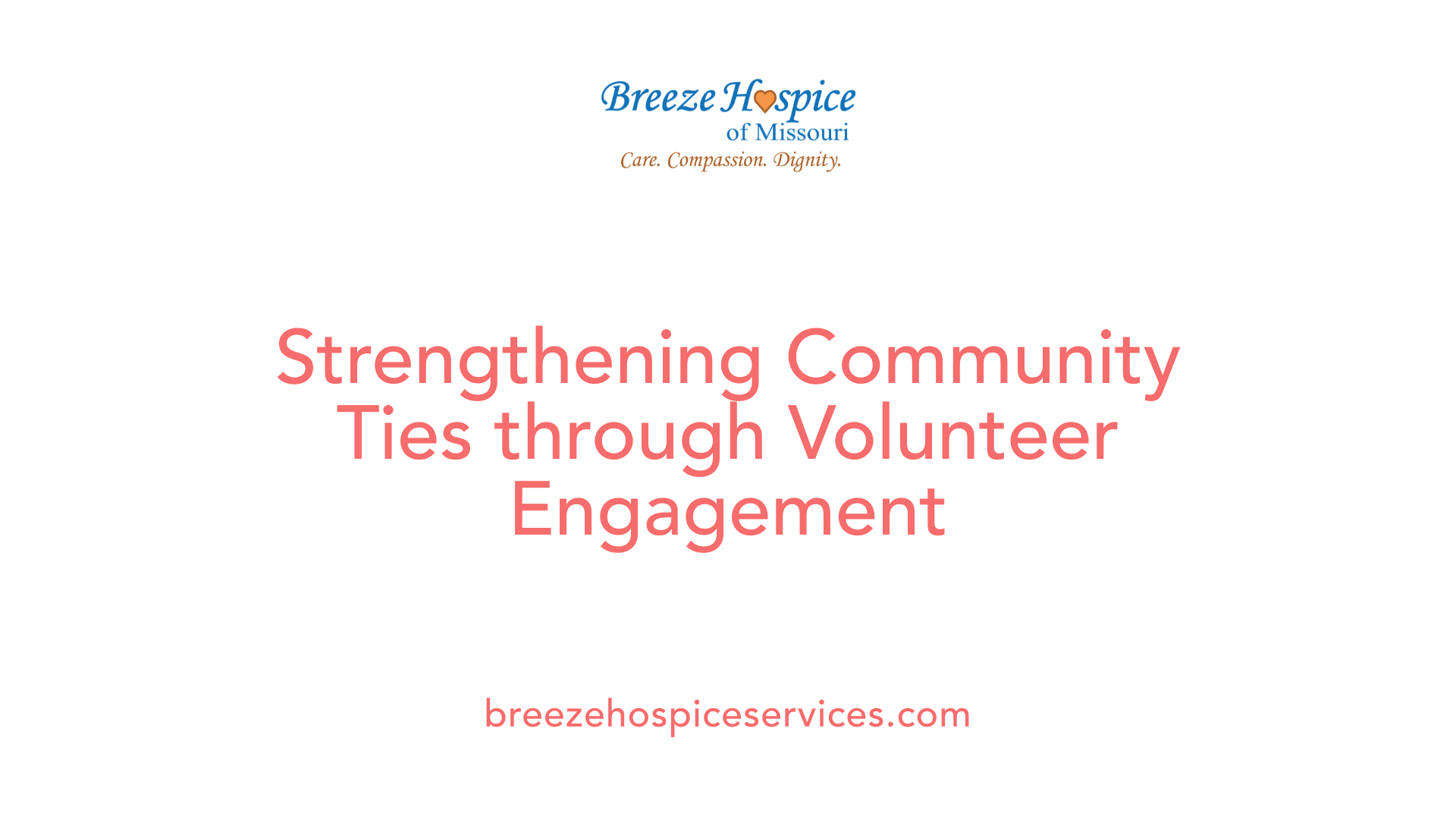Integrating Volunteer Services in Hospice Care
July 21, 2025
Strengthening Bonds: The Vital Role of Volunteers in Hospice Settings

Understanding the Significance of Volunteer Integration in End-of-Life Care
Hospice care profoundly relies on the compassionate support of volunteers who bridge the gap between clinical services and community engagement. These dedicated individuals enhance patient comfort, support families, and foster a vital connection to the community, embodying the hospice philosophy of holistic, patient-centered care. This article explores the diverse roles, best practices, and the profound benefits of integrating volunteering into hospice programs.
Types and Roles of Hospice Volunteers

What are the two kinds of hospice volunteers?
In general, hospice volunteers are divided into two categories: direct care volunteers and indirect care volunteers. Direct care volunteers provide essential support to patients and families. Their roles focus on offering companionship and emotional support.
How do direct and indirect care volunteers differ?
Direct care volunteers work closely with patients, engaging in activities such as talking, reading aloud, playing music, facilitating legacy projects, and providing comfort through massage or pet therapy. They aim to enhance emotional well-being and ensure patients feel cared for and respected.
Indirect care volunteers support the hospice organization and its operational needs without direct patient contact. Their activities include administrative tasks like data entry, coordinating fundraising events, answering phones, and delivering supplies. They also assist with community outreach, education, and organizing special events to promote hospice awareness.
Specific activities performed by volunteers in hospice care
Volunteers engage in various tasks designed to improve the quality of life for patients and their families:
- Providing companionship: sitting with patients, listening, sharing stories, or reading.
- Enhancing comfort: administering massage, aromatherapy, or therapeutic touch.
- Supporting family caregivers: shopping, doing household chores, babysitting, or walking pets.
- Assisting with personal care activities: serving meals or helping with light household tasks.
- Conducting legacy projects: making memory bears or scrapbooks.
- Supporting spiritual needs: joining patients in prayer or meditation.
- Facilitating estate and bereavement support: participating in support groups or bereavement calls.
Role of volunteers in supporting patients and families
Volunteers play a vital role in humanizing the hospice experience. They offer emotional and social support, helping patients feel less isolated during a difficult time. Their presence provides comfort and normalcy, often sharing moments of joy, reflection, or spiritual connection.
For families, volunteers offer practical assistance such as running errands, transporting loved ones, or helping with household tasks. They also serve as informal ambassadors, educating the community about hospice services and fostering understanding and acceptance.
In summary, hospice volunteers are essential to comprehensive end-of-life care. Whether providing direct support to patients or assisting organizational functions, their contributions significantly enhance the quality of care, emotional support, and community engagement.
The Multifaceted Contributions of Volunteers in Hospice

What roles do volunteers play in hospice care?
Volunteers are essential to the functioning of hospice services, offering a broad range of support that extends beyond basic medical care. Their main contribution is providing companionship and emotional support to patients facing end-of-life situations. This might include sitting with patients, reading aloud, listening to stories, or simply sharing quiet moments to help reduce feelings of loneliness.
In addition to emotional companionship, volunteers assist with practical daily needs. They help with running errands, preparing light meals, tidying living spaces, and providing transportation to medical appointments. Such support lightens the load for family caregivers, giving them essential respite. They also support activities like comforting patients with spiritual practices, participating in arts and music programs, and facilitating moments of joy and peace.
On the administrative and community engagement side, volunteers play roles in fundraising, organizing events, and raising awareness about hospice services. Many hospice organizations leverage volunteers to foster community connections, normalize hospice care, and serve as informal ambassadors. They might conduct outreach activities, support bereavement groups, or organize holiday visits, helping to bridge the gap between the hospice and the wider community.
Overall, volunteers are a vital part of the hospice team. Through their compassionate service, they help ensure that patients experience comfort and dignity during their final days while supporting families and strengthening community ties.
Training, Qualifications, and Legal Requirements for Volunteers

What does volunteering in hospice teach you?
Volunteering in hospice offers a profound learning experience, centered around compassion and empathy. Volunteers are often exposed to some of the most vulnerable moments in patients’ lives, where their presence and support can provide comfort, friendship, and emotional reassurance. This role teaches the importance of kindness, patience, and cultural sensitivity, helping volunteers appreciate the diverse ways people experience and confront end-of-life issues.
Through interactions with patients and families, volunteers develop meaningful relationships and contribute to preserving personal legacies. The experience fosters personal growth, encouraging a deeper understanding of life, death, and the importance of community support. Many find that it enhances their capacity for emotional resilience and highlights the significance of providing equitable care tailored to individual needs. Ultimately, hospice volunteering is a rewarding journey that leaves a lasting impact on both the volunteer and those they serve.
What is the minimum volunteer requirement for hospice?
Hospices are required by Medicare Conditions of Participation to incorporate volunteers as an integral part of patient care. Specifically, volunteers must provide a minimum of 5 percent of the total patient care hours, including services such as companionship, support, and non-medical assistance. This percentage ensures that volunteer efforts are meaningfully embedded into the daily routines and care planning activities of hospice organizations.
Volunteers are expected to participate actively in interdisciplinary team meetings, care plan development, and reviews at least every 15 days. They also contribute through activities like transportation, administrative support, and emotional companionship. To meet regulatory standards, hospices must ensure that volunteers undergo comprehensive orientation and training, pass criminal background checks, and adhere to health screening procedures.
While the 5 percent threshold is a specific requirement, individual hospices may structure volunteer involvement to align with their unique operational needs, always emphasizing integration and quality of service.
Program Models, Best Practices, and Strategies for Volunteer Integration

What roles do volunteers play in hospice care?
Volunteers are essential members of the hospice care team, providing a wide range of emotional, social, and practical support to patients and their families. They foster meaningful relationships by offering companionship, engaging patients in conversation, reading aloud, playing music, and supporting legacy projects like memory bears. Their presence can help normalize the hospice environment, making it feel more humane and welcoming.
Beyond emotional support, volunteers assist with daily living tasks such as running errands, helping with household chores, and providing transportation for medical appointments. They also support family caregivers by offering respite, facilitating gift-giving or legacy activities, and helping with grief support for bereaved families. Many hospice programs involve volunteers in spiritual activities, including prayer or meditation, respecting individual beliefs.
Training and background checks are standard prerequisites to ensure volunteers are well-prepared for the sensitive nature of hospice work. This structured approach guarantees that volunteers act within appropriate boundaries while delivering compassionate care. Overall, volunteers help create a holistic care experience, addressing patients' emotional and practical needs, easing family burdens, and fostering community connection.
Frameworks and models for integrating volunteers
Hospice organizations often adopt comprehensive models that blend volunteer services seamlessly into the broader care system. The interdisciplinary group (IDG) model is common, with volunteers participating in care planning, implementation, and review every 15 days. This model ensures volunteers’ contributions are documented and aligned with patient care goals.
The Health TAPESTRY program exemplifies a community-based model where trained volunteers extend primary care teams by conducting home visits, gathering vital information, and supporting goal setting. This approach strengthens person-centered, coordinated care by actively involving community resources.
Most hospices utilize structured training programs that include orientations on hospice philosophy, communication skills, privacy policies, and boundary setting. Regular in-service sessions update volunteers on new practices, policies, and ongoing education.
Management frameworks also emphasize supervision and feedback, with volunteer coordinators responsible for matching volunteer skills with patient needs, providing ongoing mentorship, and evaluating volunteer performance to ensure quality and safety.
Strategies to recruit diverse volunteers from the community
Creating a diverse volunteer workforce helps hospice services better reflect and serve their communities. Strategies include targeted outreach in diverse neighborhoods, collaborations with local community groups, faith-based organizations, and educational institutions.
Hospices are increasingly focusing on recruiting volunteers of different ages, cultural backgrounds, and life experiences to foster inclusivity. Community events, informational sessions, and social media campaigns highlight volunteer opportunities, emphasizing the meaningful impact possible regardless of age or background.
Training programs are also adapted to be culturally sensitive and accessible, ensuring all volunteers feel valued and equipped. Some organizations offer language-specific materials or interpreters to connect with non-English-speaking community members.
Best practices for training and managing volunteers
Effective training begins with comprehensive orientation sessions covering hospice philosophy, care activities, boundaries, privacy, and safety policies. Many organizations use a combination of in-person workshops, online modules, and written manuals.
Ongoing education includes in-service training, skill refreshers, and opportunities for volunteers to receive certifications in therapeutic touch, pet therapy, or special musical activities.
Management practices involve assigning volunteers to roles suited to their skills and interests, providing regular supervision, and creating feedback channels. Volunteer coordinators conduct periodic assessments, recognize volunteer contributions, and address challenges proactively.
Clear policies outline volunteer responsibilities, expectations, and procedures for handling difficult situations or disclosures of concerns. Promoting a supportive and respectful environment encourages volunteer retention and satisfaction.
In summary, embedding volunteers effectively into hospice care depends on structured frameworks, strategic recruitment, comprehensive training, and ongoing management, all aimed at enriching patient experiences and strengthening community ties.
Overcoming Challenges and Enhancing Community Engagement

What are the common challenges faced in volunteer integration?
Hospice organizations often encounter several obstacles in effectively incorporating volunteers into their care models. A primary challenge is recruitment — finding volunteers who possess the necessary compassion, sensitivity, and reliability. Additionally, secluding organizational structures can hinder community involvement, limiting outreach and the diversity of volunteers. Another significant issue is retention, as volunteers require ongoing training, support, and recognition to stay motivated. There is also sometimes a disconnect between volunteers and clinical staff, which can lead to uncertainties about roles, expectations, and the impact of their work. Furthermore, coordinating volunteer activities alongside medical teams involves clear communication and structured planning, which can be difficult to maintain consistently.
What solutions can improve volunteer involvement and diversity?
Hospices are actively working to strengthen ties with their local communities by adopting targeted recruitment strategies and expanding outreach efforts to attract a broader demographic of volunteers. This includes collaborating with community colleges, faith-based groups, and local organizations. Implementing comprehensive training programs enhances volunteers' skills and confidence, ensuring they are well-prepared for their roles. Regular orientation sessions and ongoing educational opportunities help integrate volunteers into the care team and promote a better understanding of hospice philosophy. To promote diversity, hospices aim to create welcoming environments that respect different cultural backgrounds and language needs. Providing translated materials and culturally competent training is essential. Recognition programs and feedback mechanisms also contribute to volunteer retention, making them feel valued and integral to the hospice mission.
How can communities foster greater awareness and participation?
Raising awareness about hospice services and volunteer opportunities is crucial. Hospices can increase visibility through community events, social media campaigns, and partnerships with local media. Education sessions about end-of-life care help demystify hospice services and reduce stigma. Community engagement can be further enhanced by involving volunteers in outreach activities, such as educational seminars and health fairs. These initiatives serve as platforms to share information, dispel misconceptions, and recruit new volunteers. Establishing volunteer ambassador programs enables current volunteers to act as representatives, sharing their positive experiences and broadening the hospice’s reach within the community. Overall, fostering a strong link between hospices and their local environments helps cultivate a compassionate community network, supporting both patients and volunteers.
| Aspect | Description | Additional Detail |
|---|---|---|
| Volunteer Contribution | Generally, at least 5% of patient care hours | Includes direct care, administrative, transportation, and companionship services |
| Volunteer Recruitment | Collaboration with community groups, targeted outreach | Focus on diversity, cultural competence, and language skills |
| Training & Support | Orientation, ongoing education, recognition | Enhance skills, retain motivation, ensure understanding of hospice philosophy |
| Community Engagement | Outreach, awareness campaigns, volunteer ambassadors | Increase visibility, dispel myths, encourage participation |
| Challenges | Recruitment, retention, communication gaps | Solution strategies include training, recognition, community partnerships |
Engaging volunteers in hospice care requires overcoming inherent challenges and actively fostering community participation. With dedicated strategies, hospices can build vibrant volunteer programs that enrich patient support and deepen community bonds.
Fostering Compassion and Community Through Volunteer Engagement
The successful integration of volunteer services in hospice care enriches the quality of end-of-life support for patients and families, enhances the capacity of hospice organizations, and strengthens community bonds. By understanding the roles, training standards, and program models, hospices can overcome challenges and foster a diverse, committed volunteer workforce. Embracing volunteers as essential team members not only improves operational efficiency but also sustains the compassionate spirit that lies at the heart of hospice care. Active community involvement and continuous program development are crucial to ensuring that volunteer efforts remain impactful, respectful, and aligned with the core values of dignity, comfort, and connection.
References
- Hospice volunteers: bridging the gap to the community? - PMC
- Volunteering for hospice
- [PDF] Compliance Tools & Resources - National Alliance for Care at Home
- Experiences of integrating community volunteers as extensions of ...
- How Can Hospice Volunteers Help Your Organization? - Relias
- Get a glimpse into what it's like to be a hospice volunteer coordinator
- Volunteers | The Hospice of San Diego



































































































